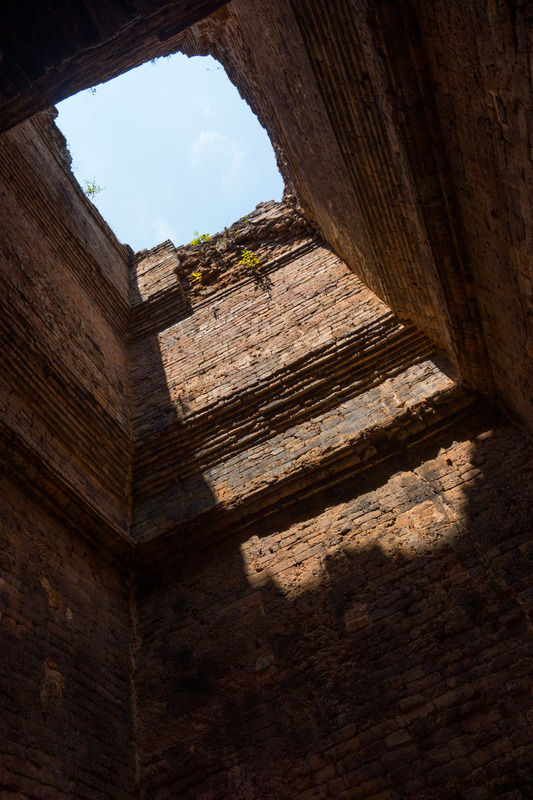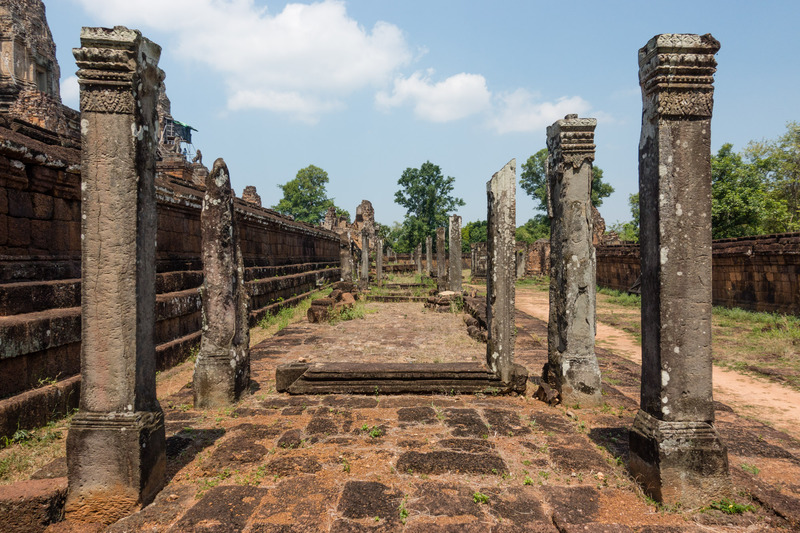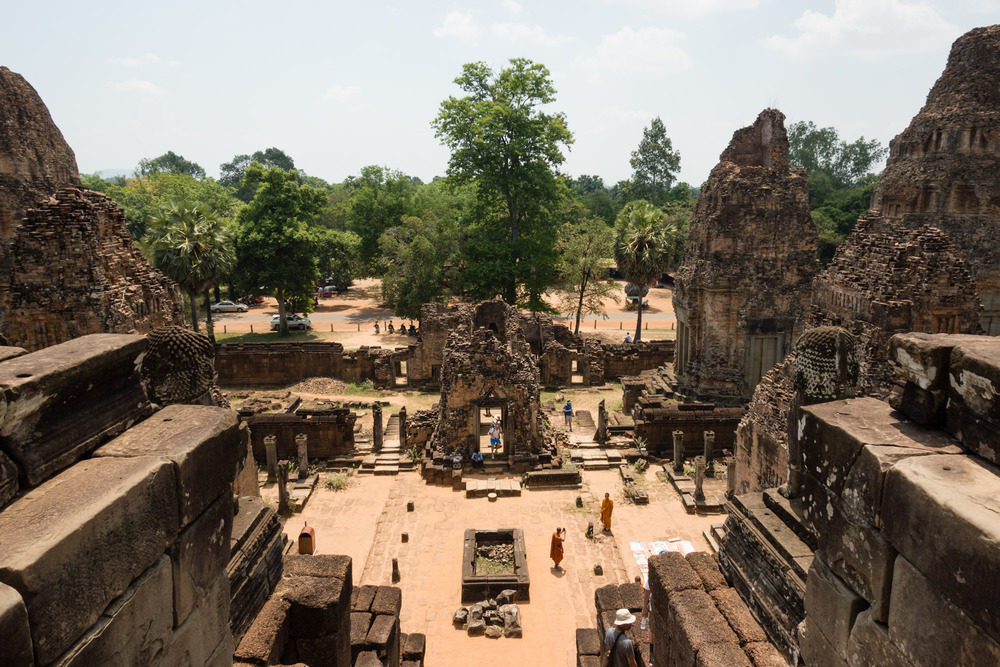The Angkor Archaeological Park
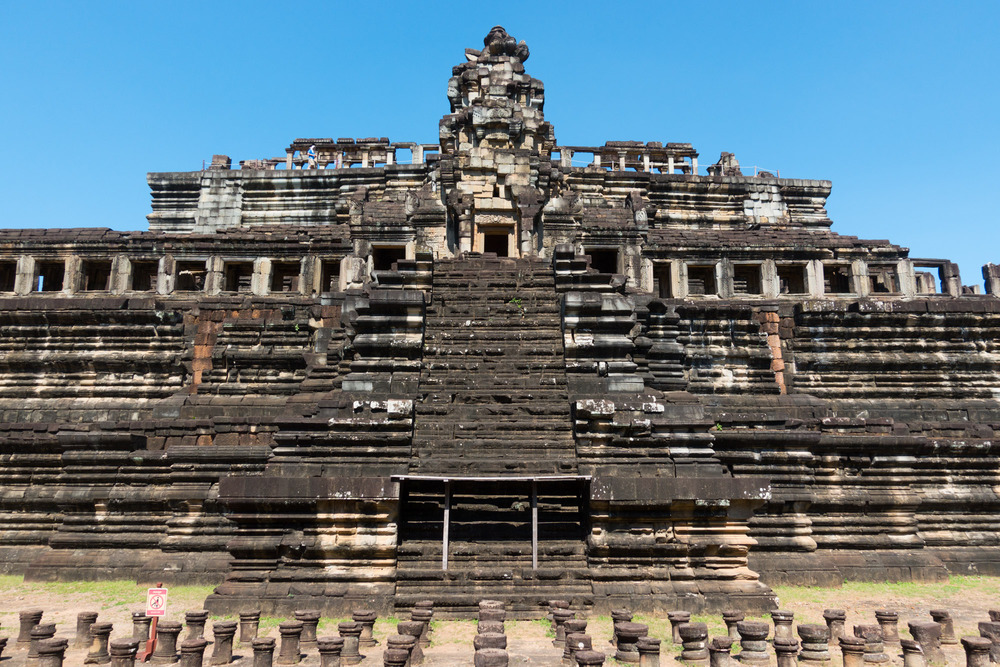
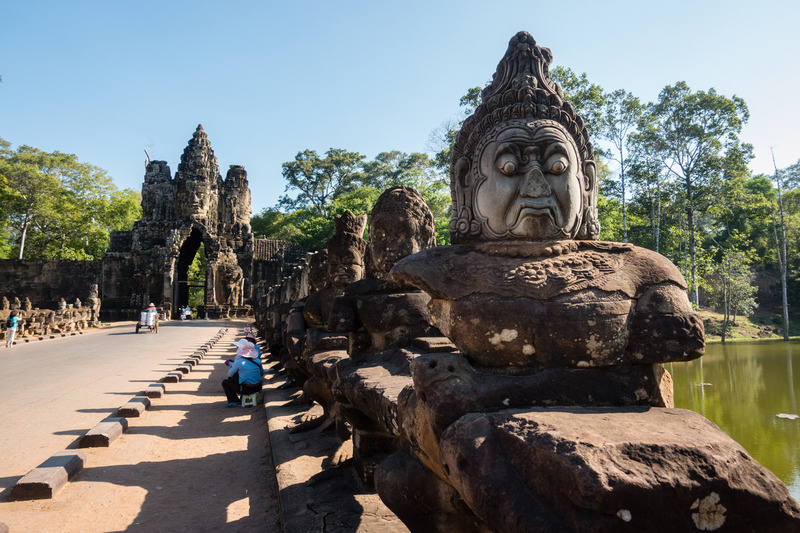
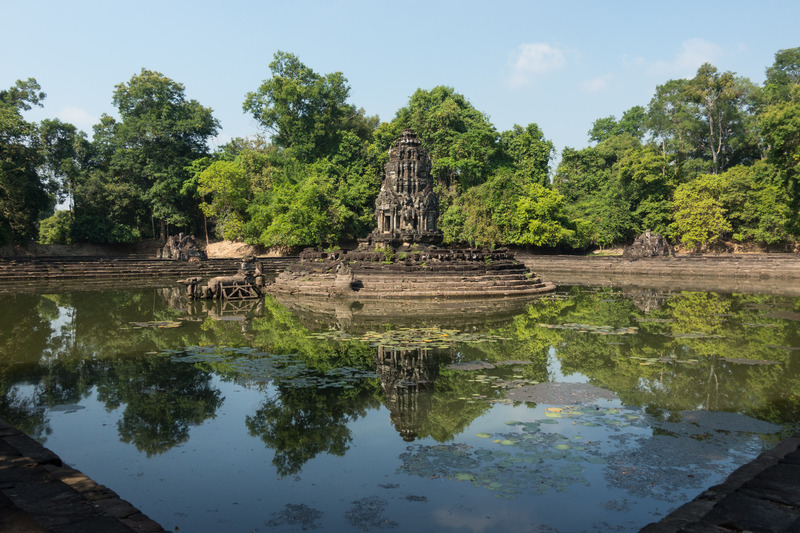
Over the course of three days, Jake and I explored Angkor Wat and the surrounding temples in the Angkor Archaeological Park. We bought three-day entrance tickets for the area, and this covered all but one of the sites we visited. Our hotel had many tour recommendations depending on our available time, and helped us book daily private tours by tuk-tuk or car.
Day 1: Small Circuit
Our hotel recommended this tour for people with limited time, as it covers the most iconic nearby locations. This tour was a good introduction to the variety of architecture in the Angkor Park.
- Angkor Wat
- Angkor Thom: South Gate, Bayon, Baphuon, Phimeanakas, Terrace of the Elephants, Terrace of the Leper King
- Chau Say Thevoda
- Thommanom
- Ta Keo
- Ta Prohm
- Banteay Kdei
Day 2: Remote Sites
These sites were located much farther from Siem Reap, and we spent about an hour driving between each of the three sites. Our guide filled the time by sharing lots of information about life in Cambodia.
- Bantey Srey
- Beng Mealea
- Roluos Group: Lolei, Preah Ko, Bakong
Day 3: Large Circuit
Jake and I thought that many of these sites were more interesting than the things we’d seen previously. This was mostly because we’d become a lot more familiar with Angkorian architecture.
- Phnom Bakheng
- Preah Khan
- Neak Pean
- Ta Som
- East Mebon
- Pre Rup
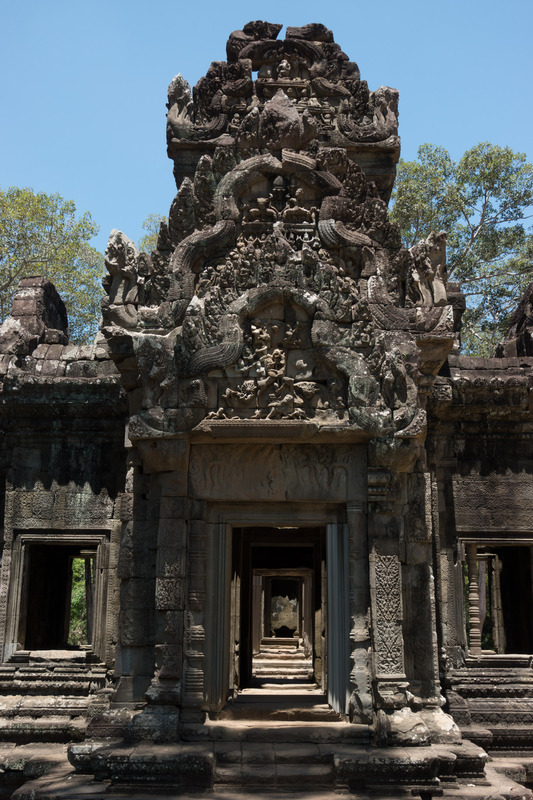
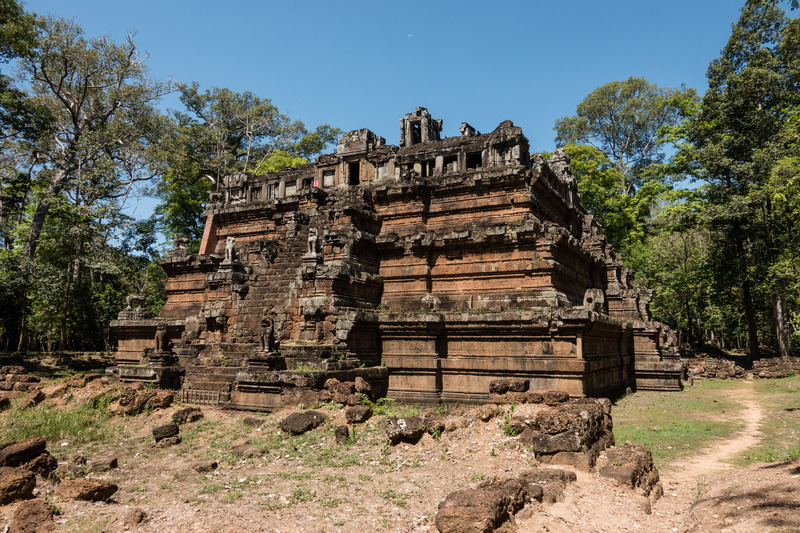
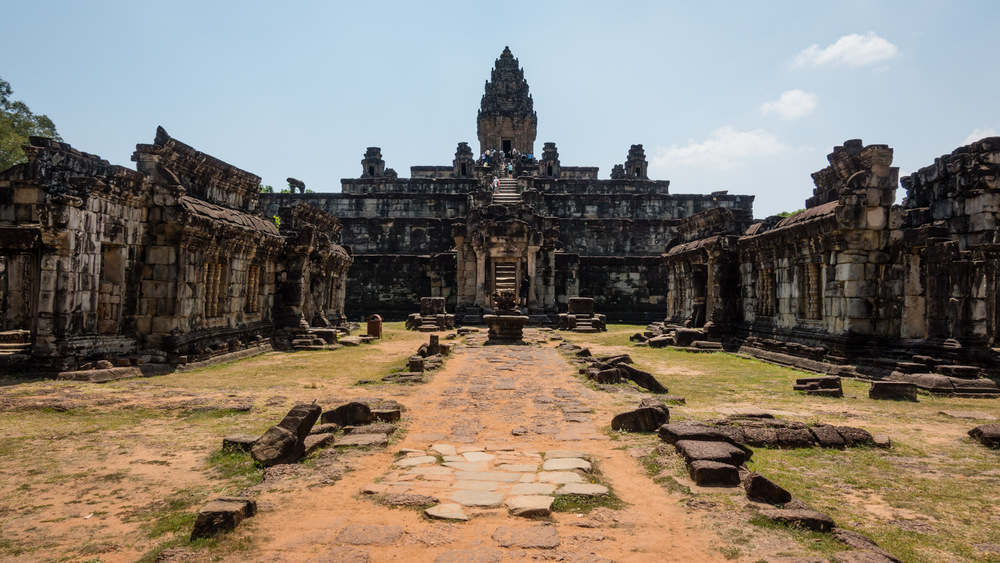
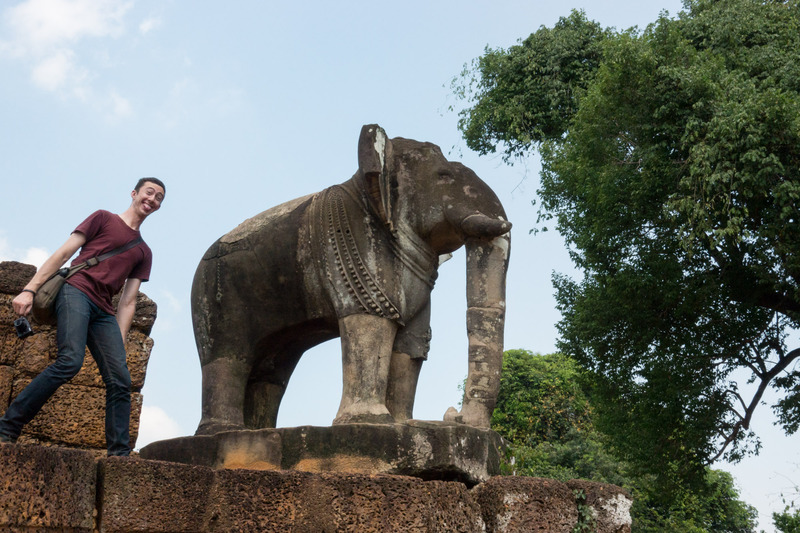
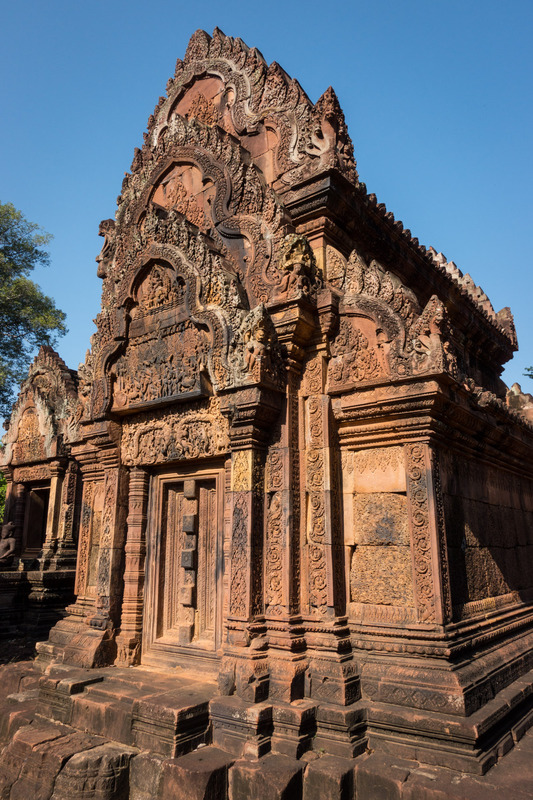
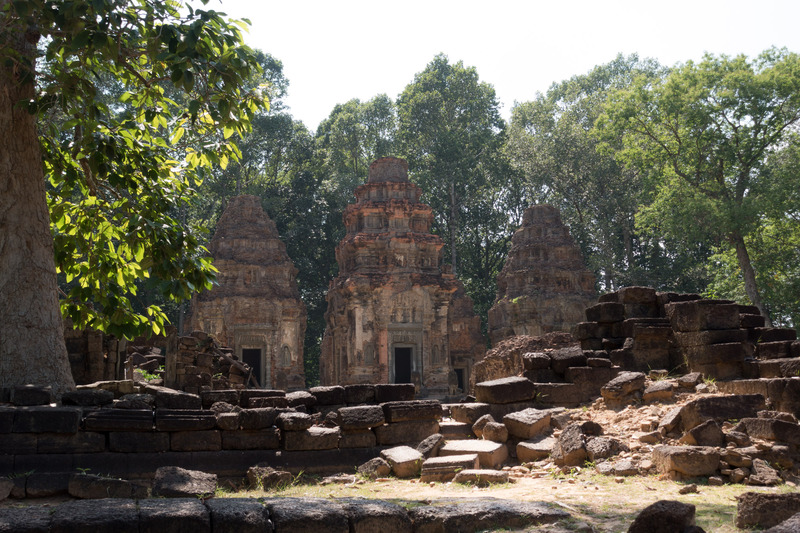
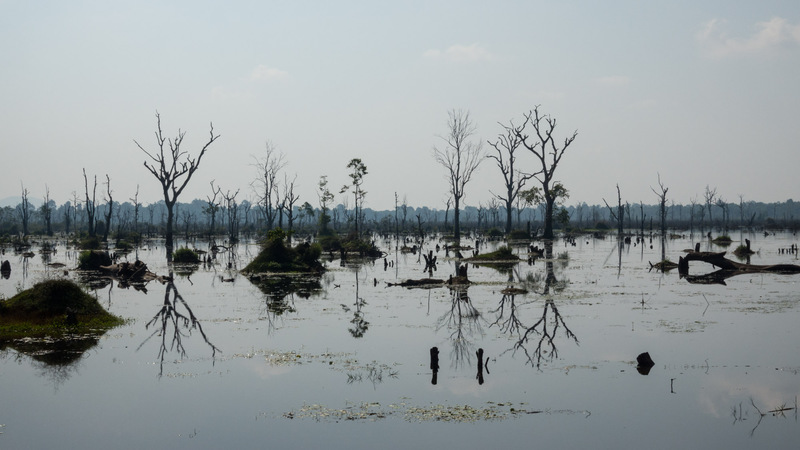
Neither Jake nor I are morning people. However, we forced ourselves to get up early on all three days. Cambodia gets unbearably hot as the sun rises, and the temperature peaks around 2pm or 3pm. Getting an early start allowed us to finish our tours around that time or even slightly earlier. Early starts also enabled us to bypass some of the crowds.
In my opinion, a visit to the Angkor Archaeological Park needs to be at least three days long. There are too many interesting sites, and the best can’t all be packed into one day. My favorite sites (of which there are many) were spread out over all three days:
Angkor Wat
The name “Angkor Wat” is the most well-known name of the bunch. It’s the name of just one temple complex. The unique thing about this site is that it was rediscovered by westerners in a startlingly pristine condition. Whereas other sites have needed to be reconstructed from piles of rubble, Angkor Wat is in almost the exact same state as when it was most recently uncovered.
Jake and I decided to watch the sun rise over Angkor Wat. Our tuk-tuk picked us up from the hotel at 4:40AM, which gave us enough time to purchase 3-day entrance tickets and to drive to the temple. The road was filled with other tuk-tuks and the occasional car and tour bus. Our driver dropped us off with the throng of other tourists, and we joined the steady flow of people walking into the temple complex. Jake and I found a spot to stand on the bank of the northern reflecting pool (the southern pool was smaller and more dried-up). From our spot, we watched the sun rise over Angkor Wat’s outer wall. However, pictures were a bit had to take, as we had to shoot over the heads of the the people who arrived before us.
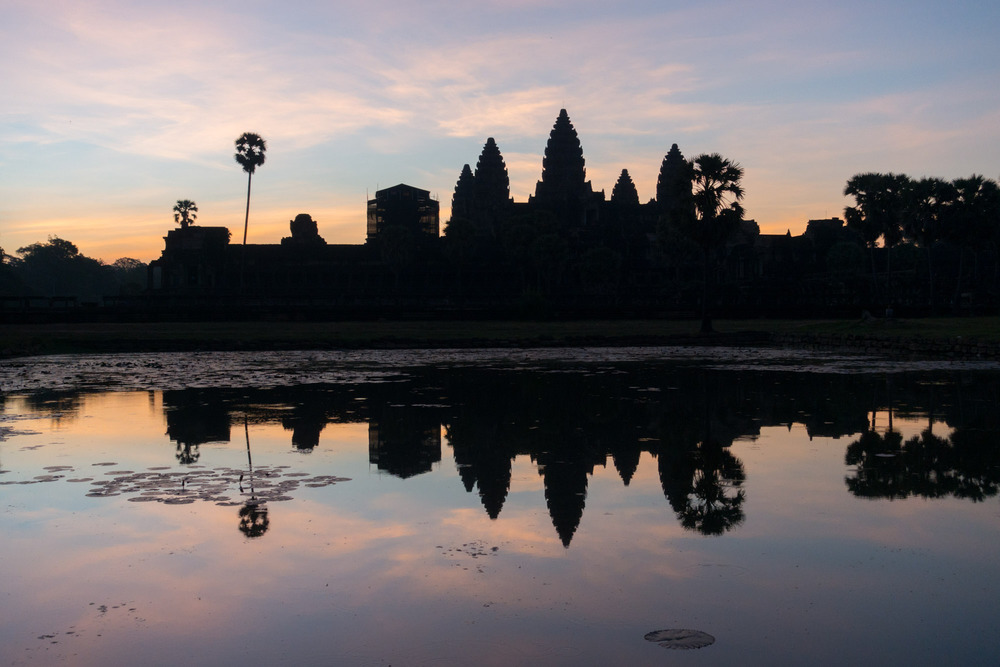
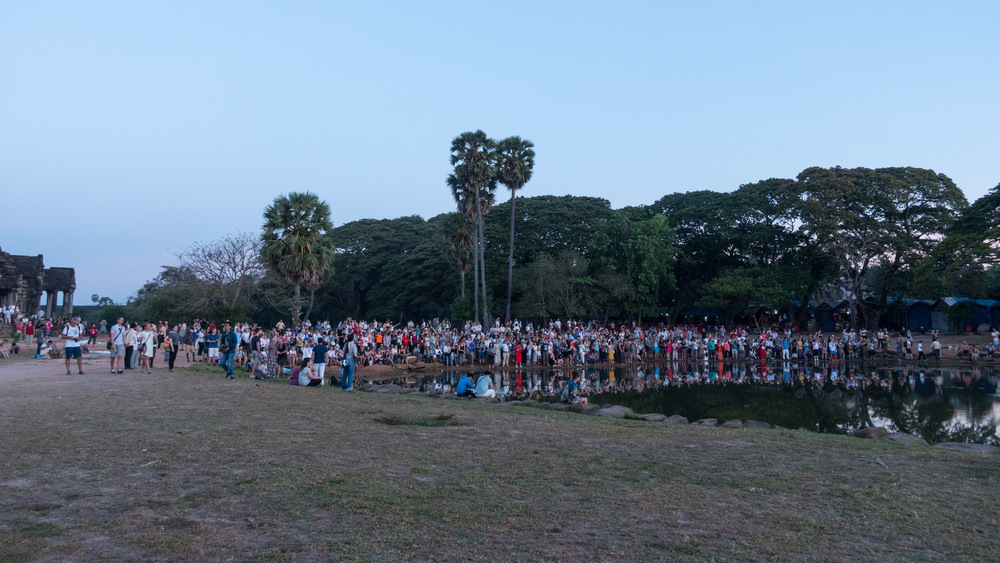
After the sun finished rising and the sky’s dramatic colors faded, we walked to the front of the temple (doors opened at 5:30AM). I looked back at the reservoir and saw a mass of people, selfie sticks, tripods, phones, and DSLRs. Despite the early hour, many people had made it out to see the sun rise. And we were told that the crowds were even larger the previous week, when record numbers of domestic tourists flocked to Siem Reap to celebrate Cambodian New Year.
One of the most remarkable things about Angkor Wat is the continuous bas-relief decorating the wall that encircles the entire complex. The carvings cover the outer walls from knee-height to about 8 feet high. The intricate carvings illustrate stories from the Reamker, the Khmer version of the Sanskrit epic, the Ramayana.
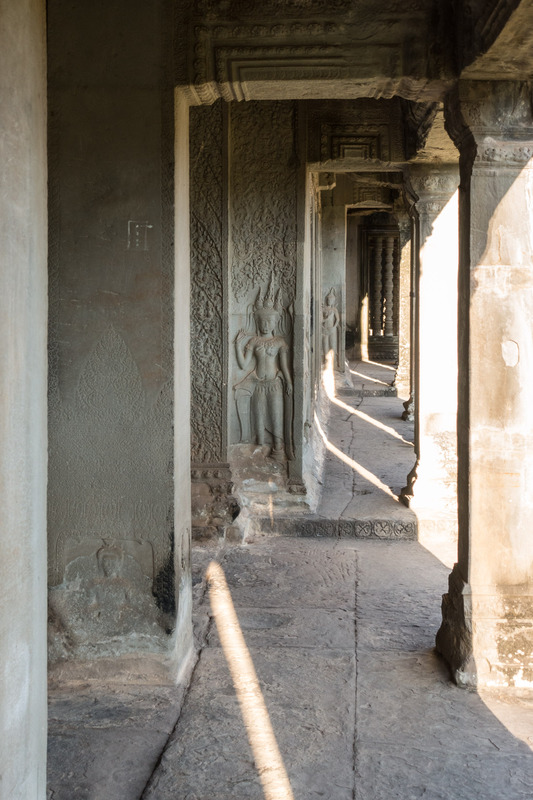
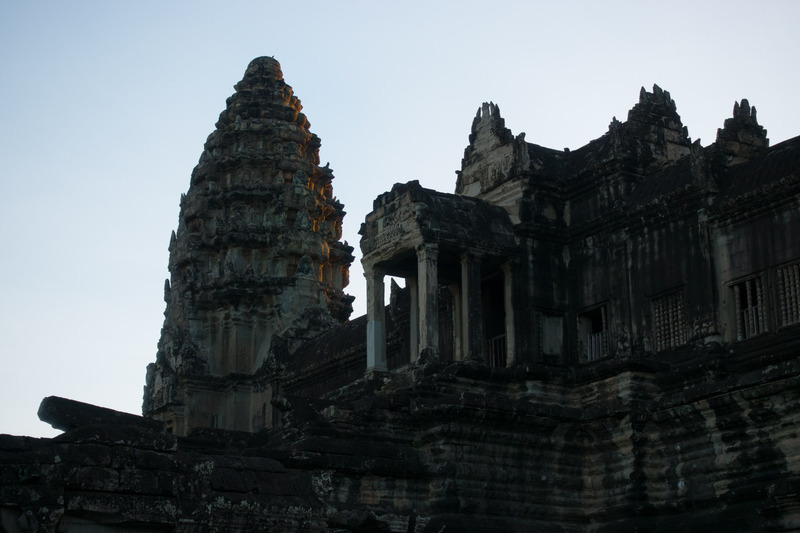
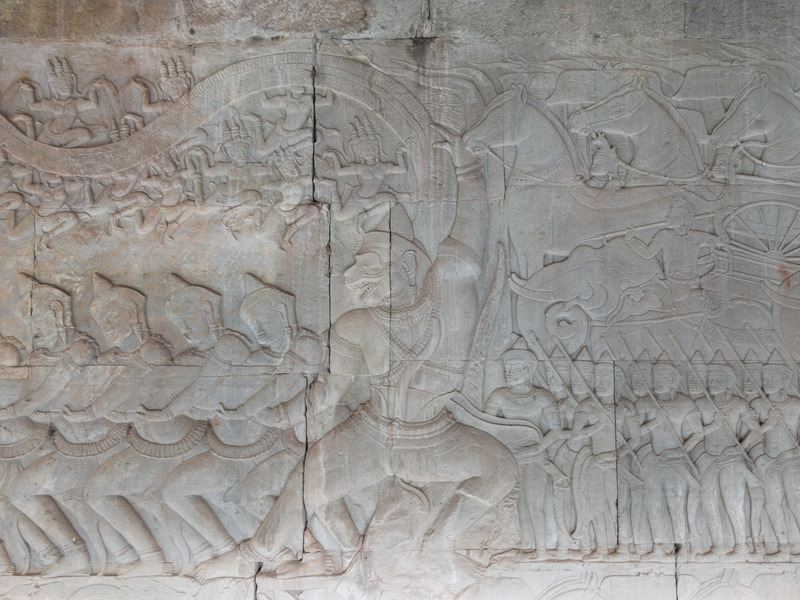
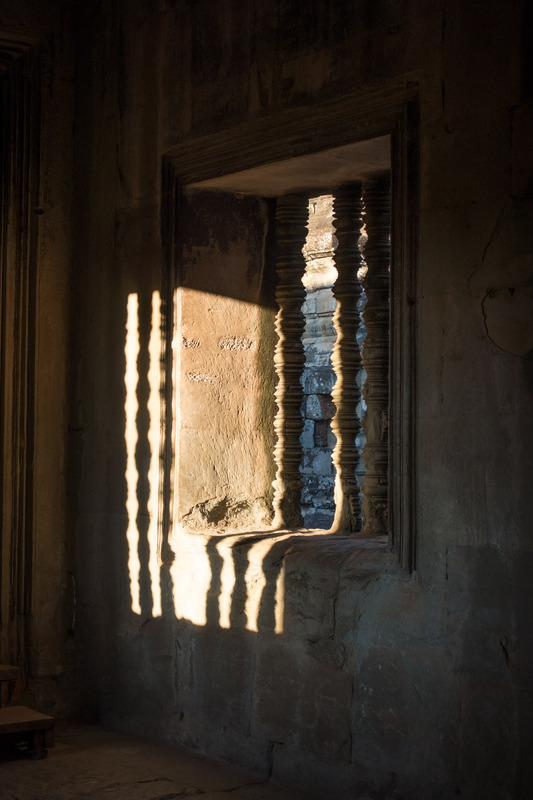
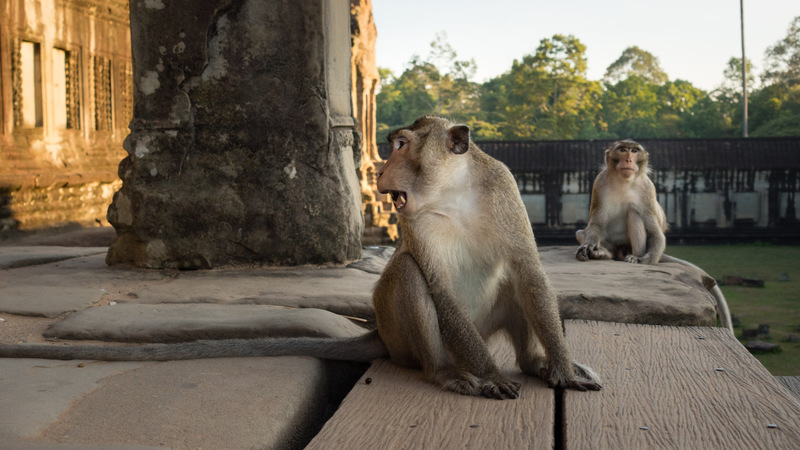
Bayon
This was our first stop within Angkor Thom, the huge walled complex north of Angkor Wat. Angkor Thom was an ancient capital city of the Khmer Empire. Religious buildings during the Khmer Empire were constructed from stone; all other buildings, including palaces and living quarters, were constructed from less permanent materials. As a result, Angkor Thom is sparsely populated with many temples in a variety of styles, as all the other buildings have since disintegrated.
The Bayon is the most iconic of all the temples in Angkor Thom. It is a maze of narrow passageways and steep staircases that lead to the upper levels. On the highest level, we joined the throngs of tourists milling about in the hot sun and admired the many fantastic carved faces. We also performed the requisite dodging of selfie sticks.
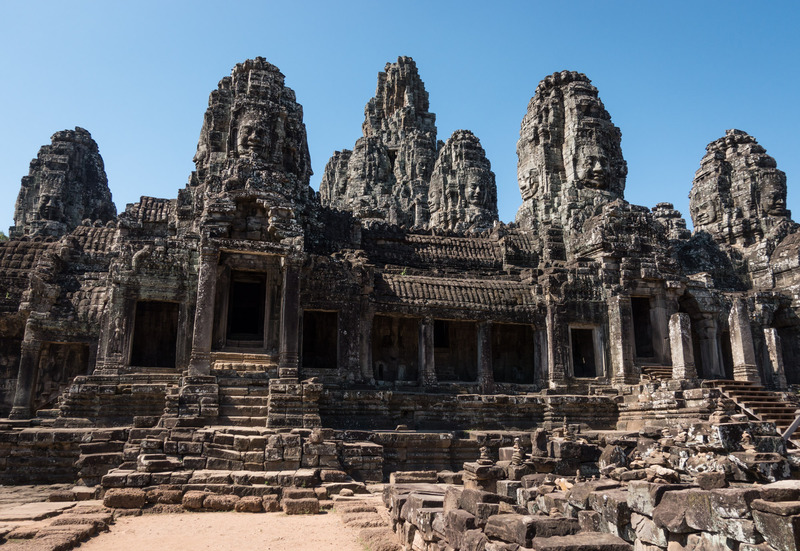
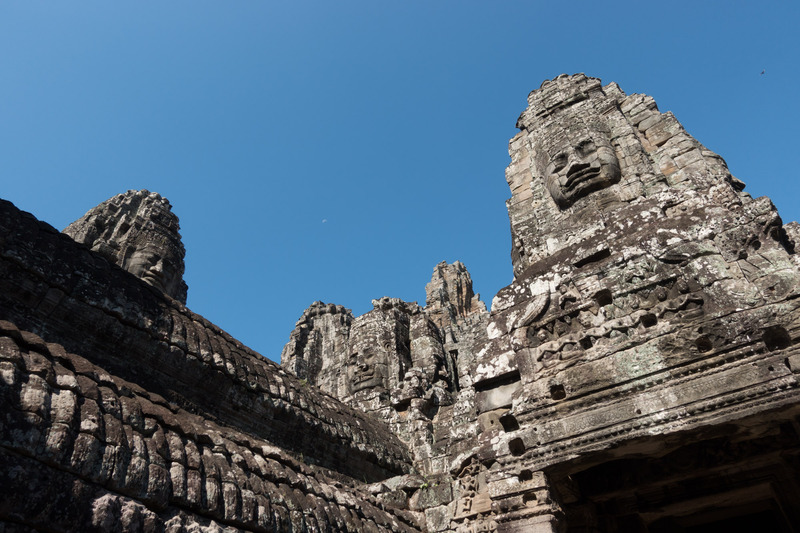
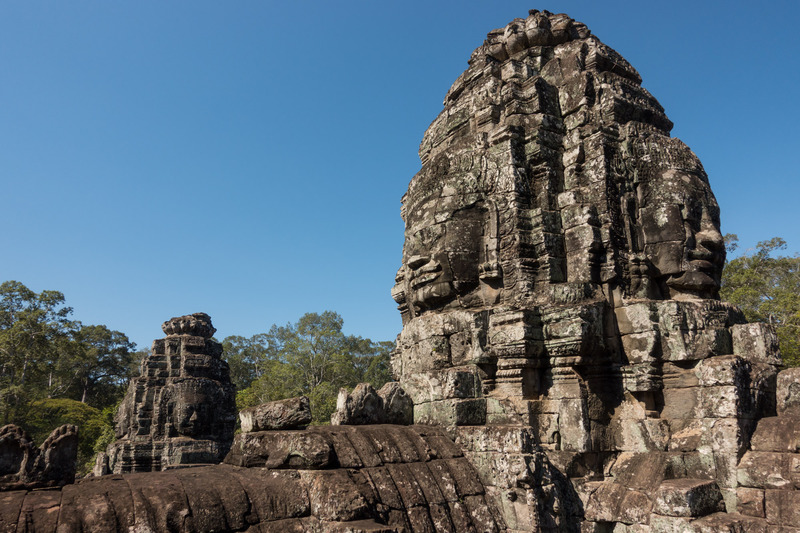
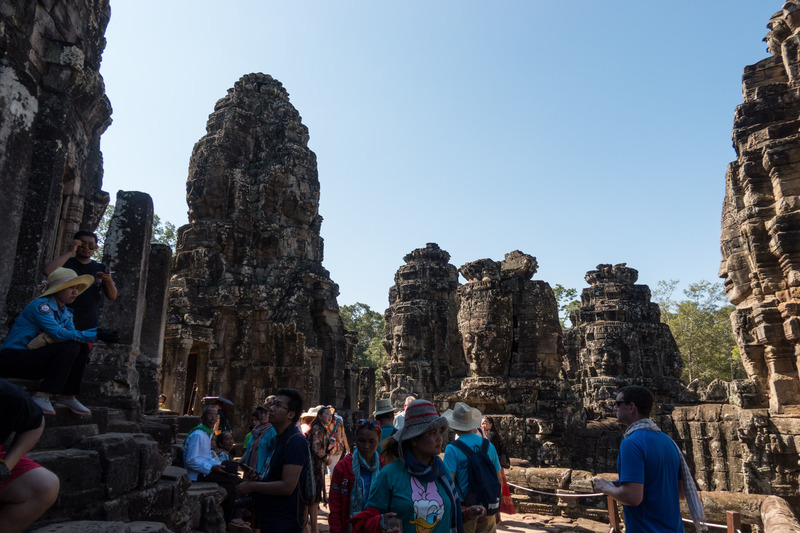
Phnom Bakheng
This temple mountain is located halfway between Angkor Wat and Angkor Thom. After seeing the sunrise from Angkor Wat on our first day, we wanted to see if we could catch the sunrise again from a different vantage point. Our hotel recommended Phnom Bakheng as a less-visited location that offered far-off views of Angkor Wat.
Jake and I were the first tourists to arrive at Phnom Bakheng, and we reached the top while it was still dark (and before a park attendant even showed up). We had the place to ourself for awhile, and ended up sharing the sunrise with only four other tourists. Overall, we were quite pleased. And on our way down the hill, we stopped to admire the West Baray. The West Baray is a huge reservoir that measures 7.8 by 2.1 km (and was constructed by hand in the 11th century). Even from our hill-top vantage point, we could not see the farthest shore.
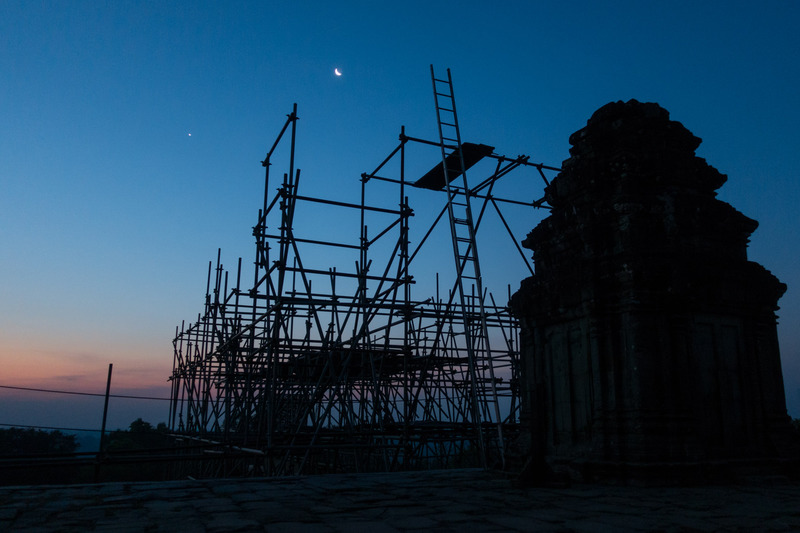
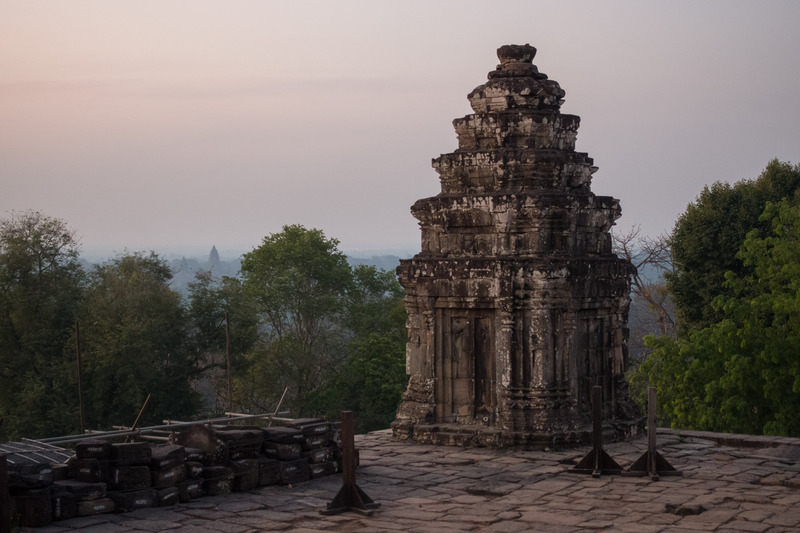
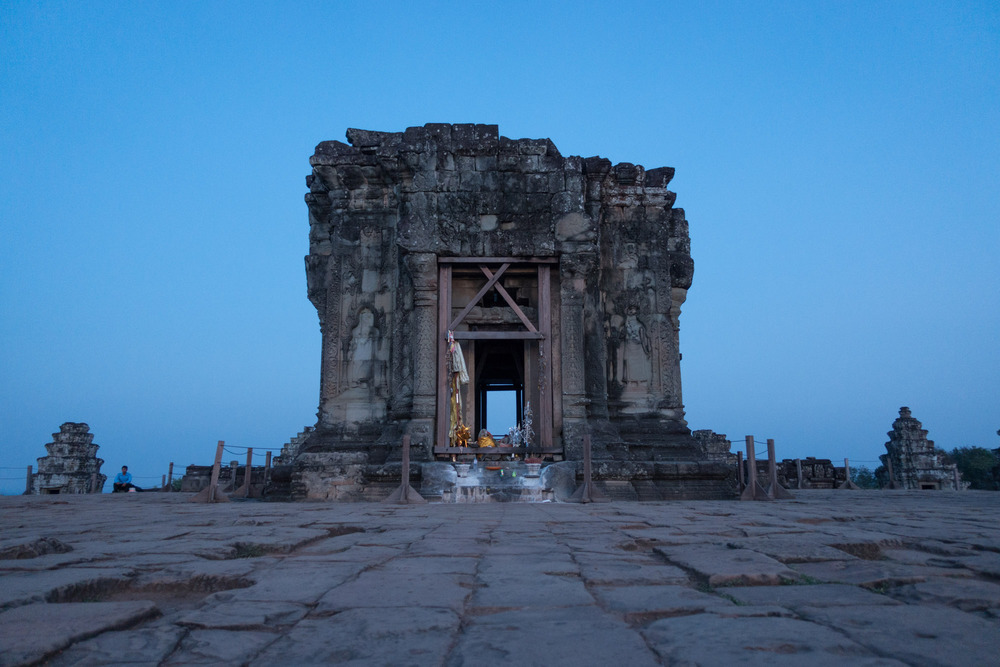
Banteay Kdei
This temple is symmetric along its east-west axis, and there is a straight corridor that runs through all the stone chambers. The complex was small, but quite beautiful. When we exited the temple, we crossed the parking lot and looked out over Sras Srang, a reservoir (much smaller than the earlier mentioned West Baray).
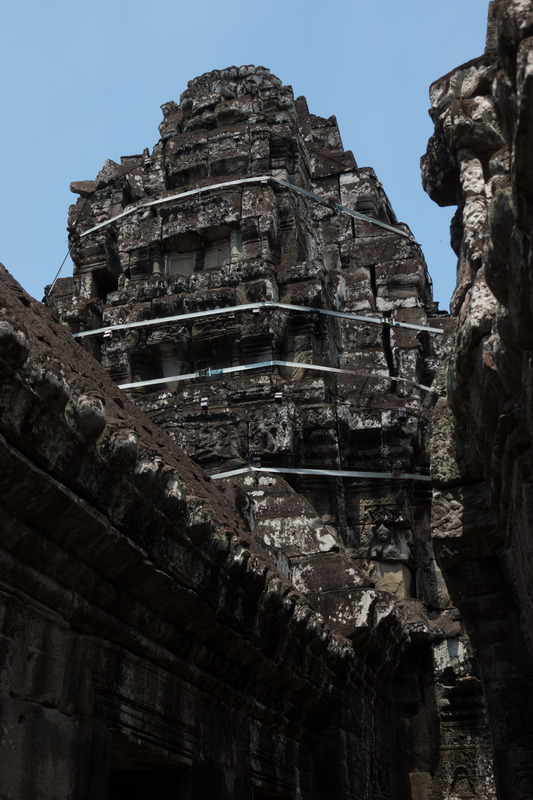
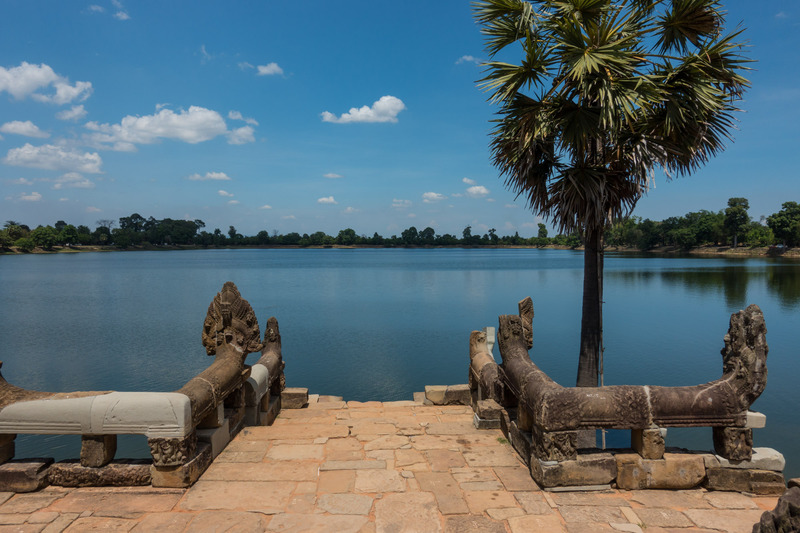
Ta Prohm
Ta Prohm is in a fascinating state of disarray, and is representative of what many of the other sites looked like before restoration took place. Silk-cotton trees and strangler figs grow over many of the walls and on top of roofs. However, it was easy to navigate the temple, since the buildings are spread apart and much of the brush (at least where tourists are directed to walk) is cleared away.
This temple has a very “Indiana Jones” vibe, and at least one movie producer has capitalized on that. Ta Prohm was featured in Lara Croft: Tomb Raider, and contains the so-called “Angelina Jolie tree”. I was able to recognize this (apparently) famous tree by the wooden platform and rope fence. However, we chose to skip the photo opportunity and go look at all the other trees and rubble piles.
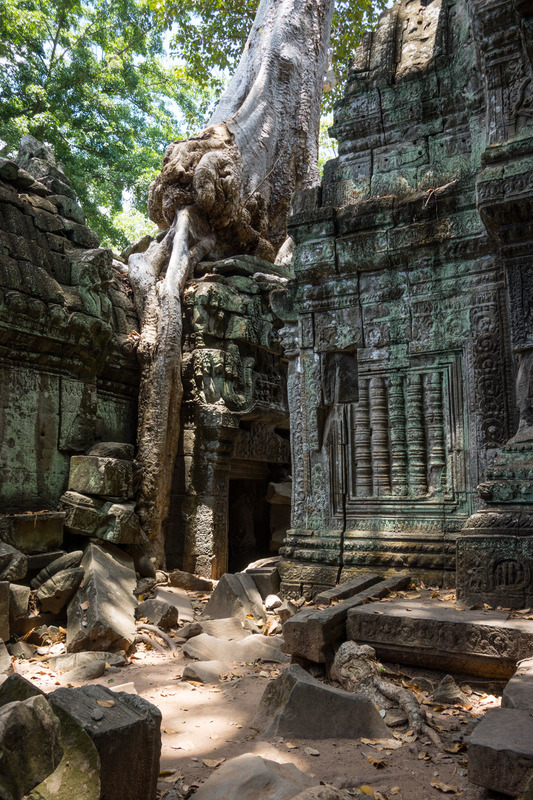
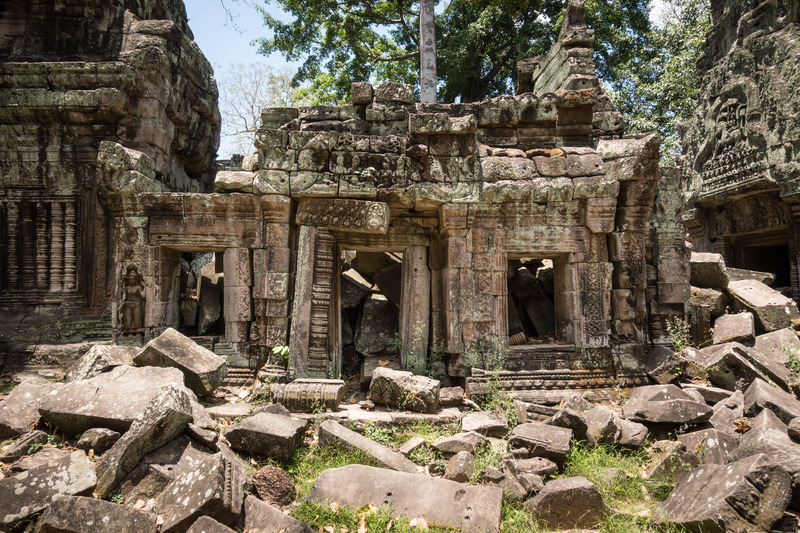
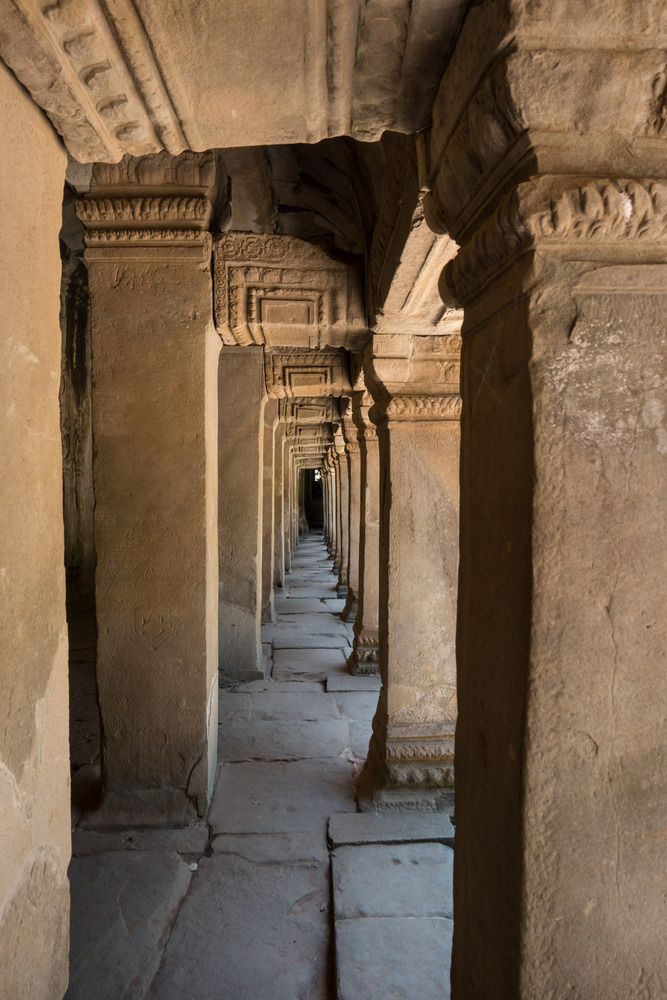
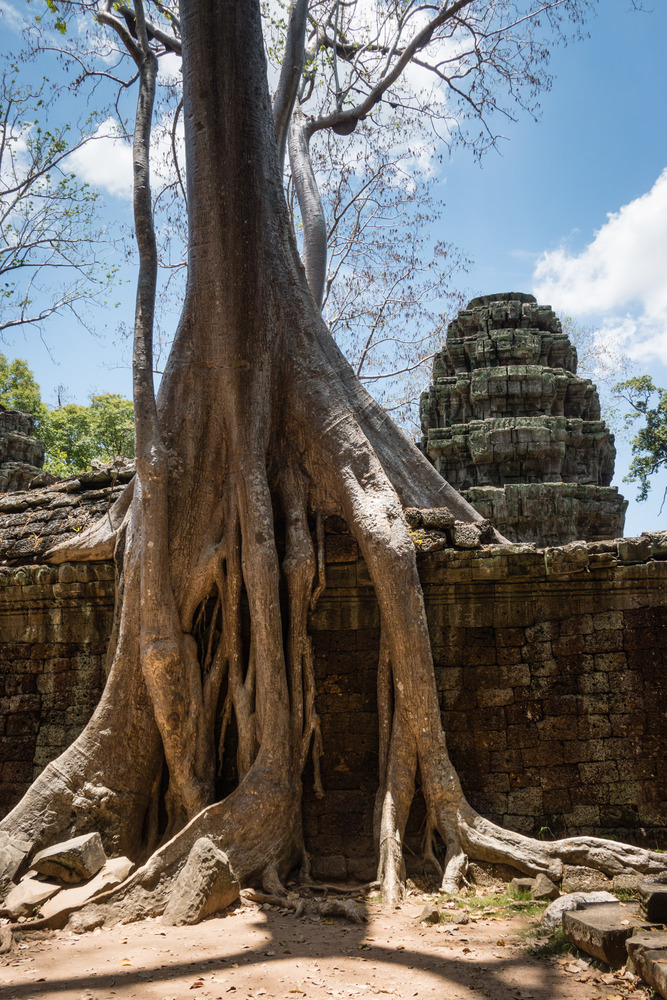
Beng Mealea
This was one of my favorite temples. Like Ta Prohm, Beng Mealea is in a mostly collapsed state. However, it is much larger, of comparably large size to Angkor Wat. While at Beng Mealea, we saw towering walls and mountainous rubble piles. To ease the way for modern adventurers (and to minimize the degrading impact of tourists), wooden staircases and walkways were built that stretch over the walls. From these walkways, we got a unique aerial view of the ruins that couldn’t be achieved at any of the other sites.
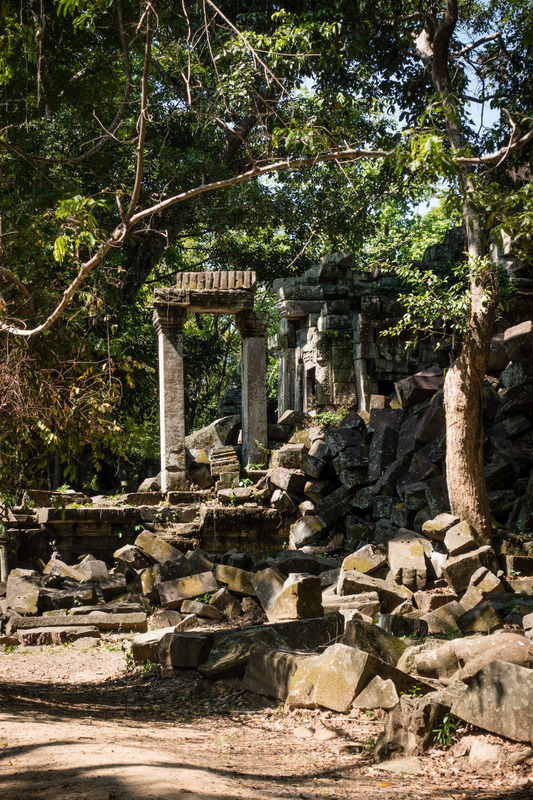
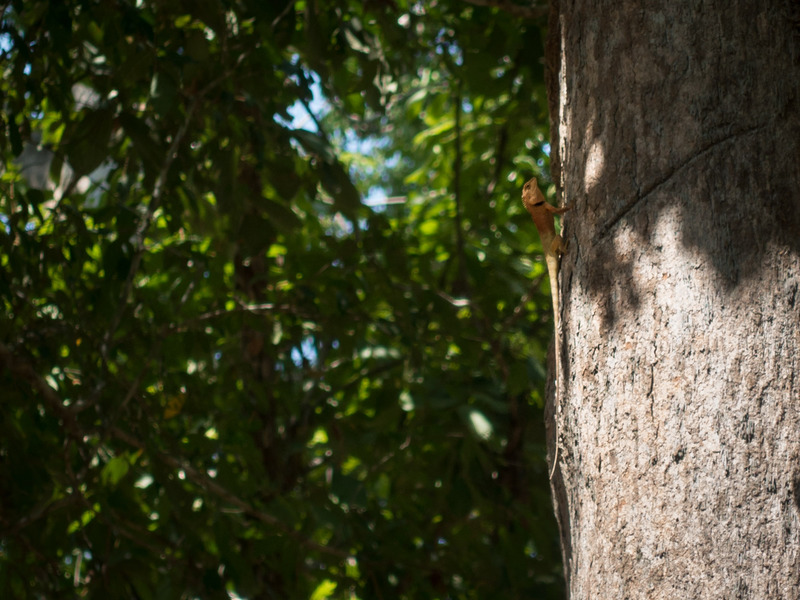
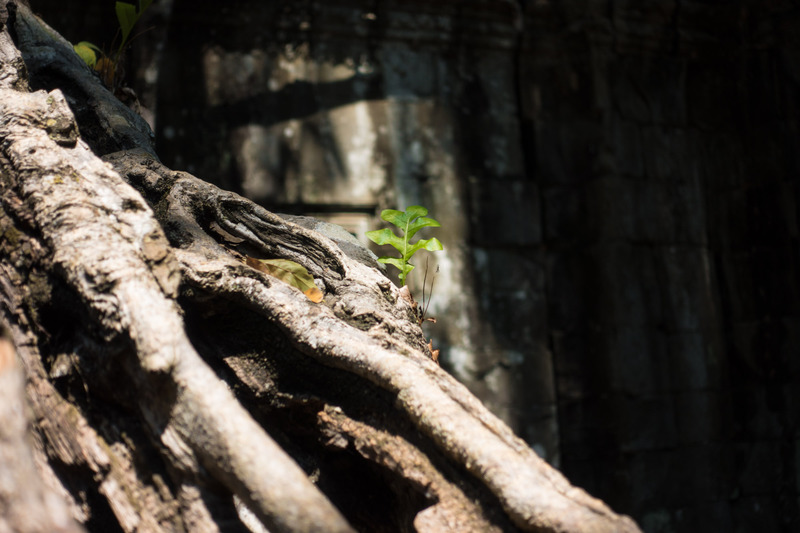
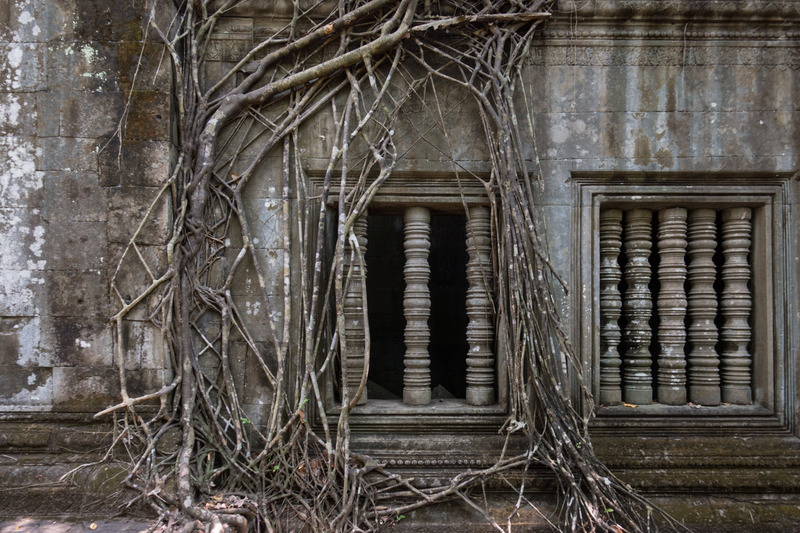
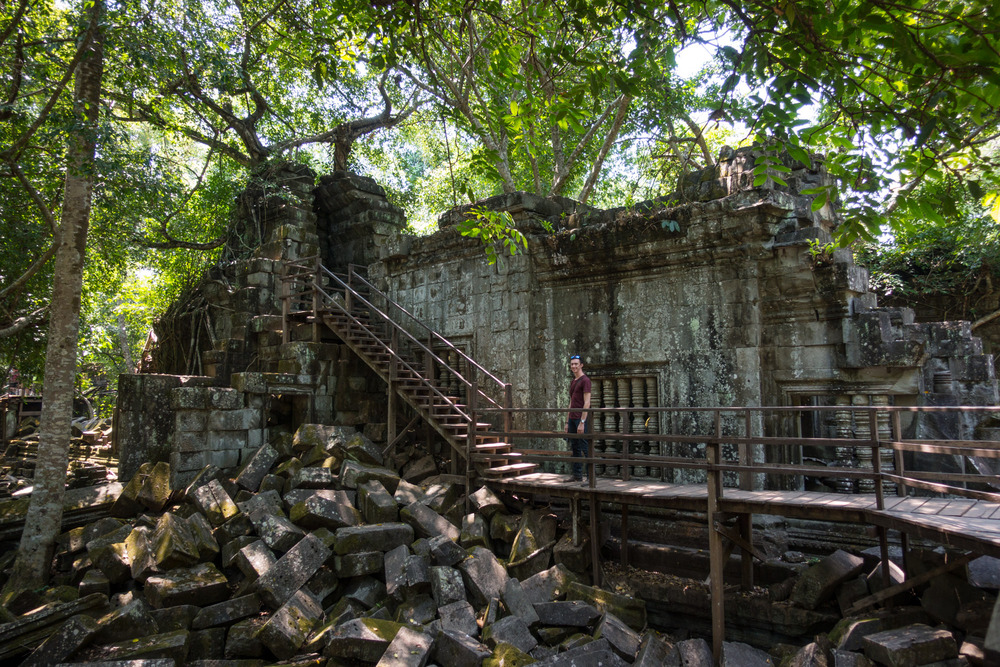
Preah Khan
Preah Khan lacked the towering height of Beng Mealea, but made up for that with detailed carvings and an extensive network of corridors. A long corridor ran down the center of this single-floor complex, but there were many intersections leading to other wings and parallel corridors. Every time we thought we’d reached the end, a new corridor appeared; the temple complex seemed to stretch on and on. However, the size never became boring. There was a huge amount of variety in the architecture of courtyards, the size and shape of side chambers, and the types of figures carved onto walls.
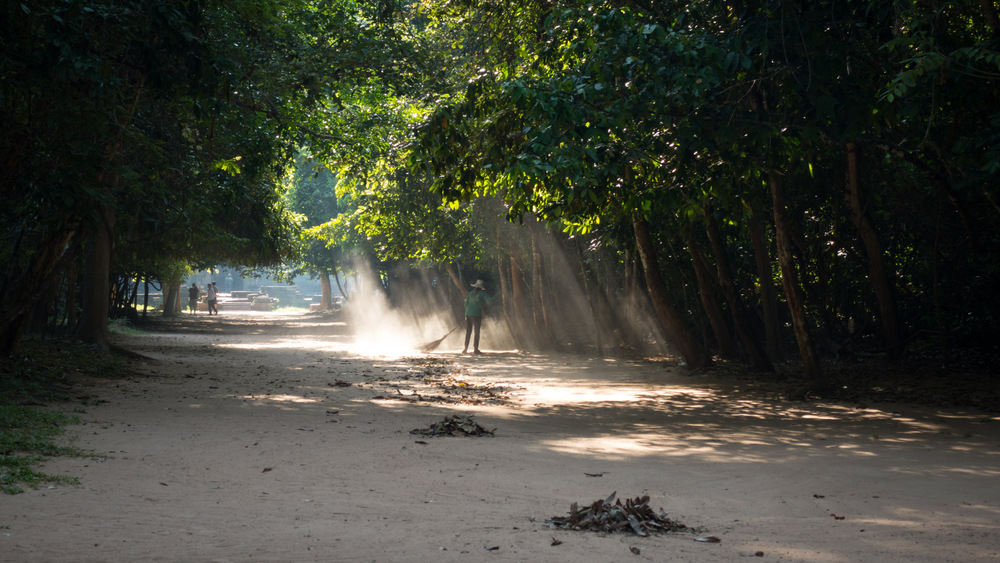
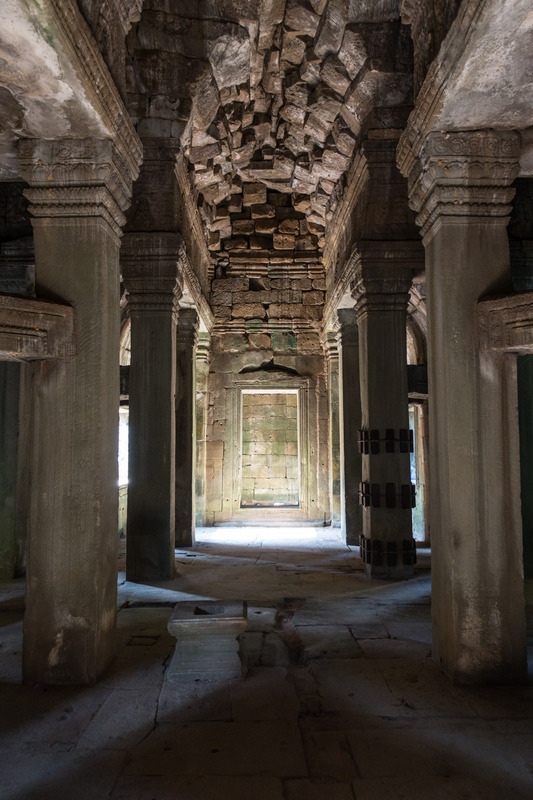
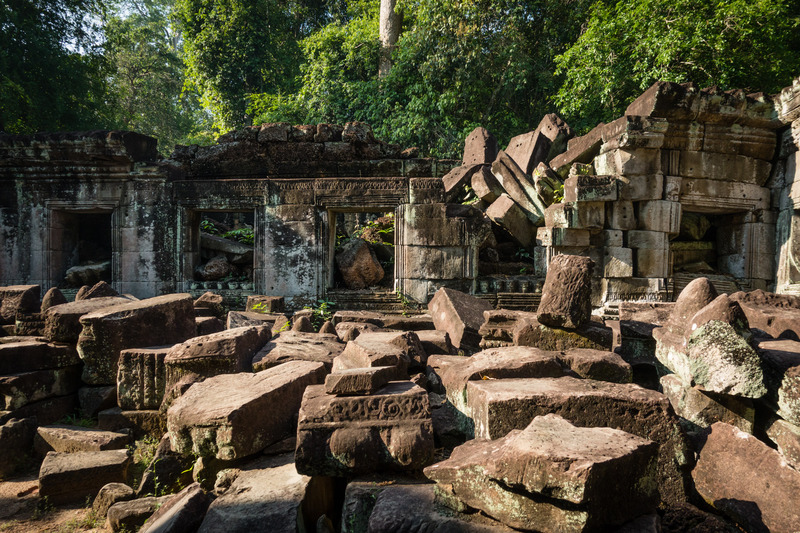
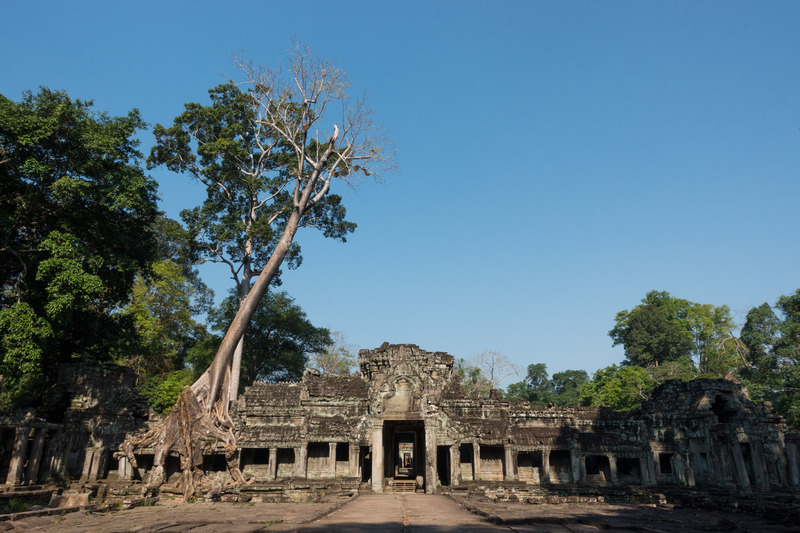
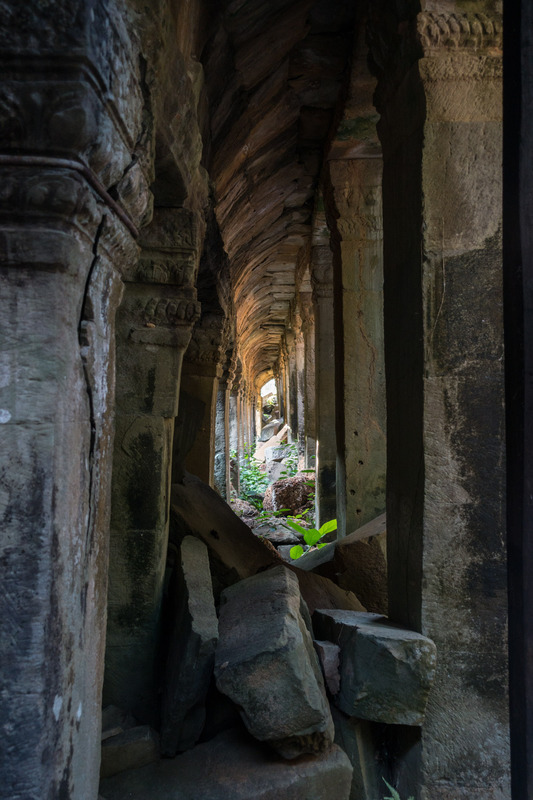
Pre Rup
Pre Rup was the last temple we visited. It was a towering temple mountain with many standalone towers on the different levels. Most of the other tourists were content to wander up and down the main staircase; Jake and I decided to explore all the side towers, and to peer down the ruins of pillared corridors.
Jake overheard an intriguing conversation between a woman selling souvenirs and an interested buyer:
Her: Do you want to buy a scarf? Just one dollar!
Him: I only have Riel. Is Riel okay?
Her: Okay. One dollar, 60 thousand Riel.
Him: Okay.
And then the guy bought the scarf at the stated asking price of 60,000 Cambodian Riel. Note: 60,000 Riel = $15. I don’t even know what that much Riel looks like. In Cambodia, all prices are given in US dollars. Anything less than $1 is paid for in Cambodian Riel, and it’s universally understood that $1 = 4,000 Riel. As a result, most Cambodian money only circulates in very small denominations. US bills are used for everything else.
